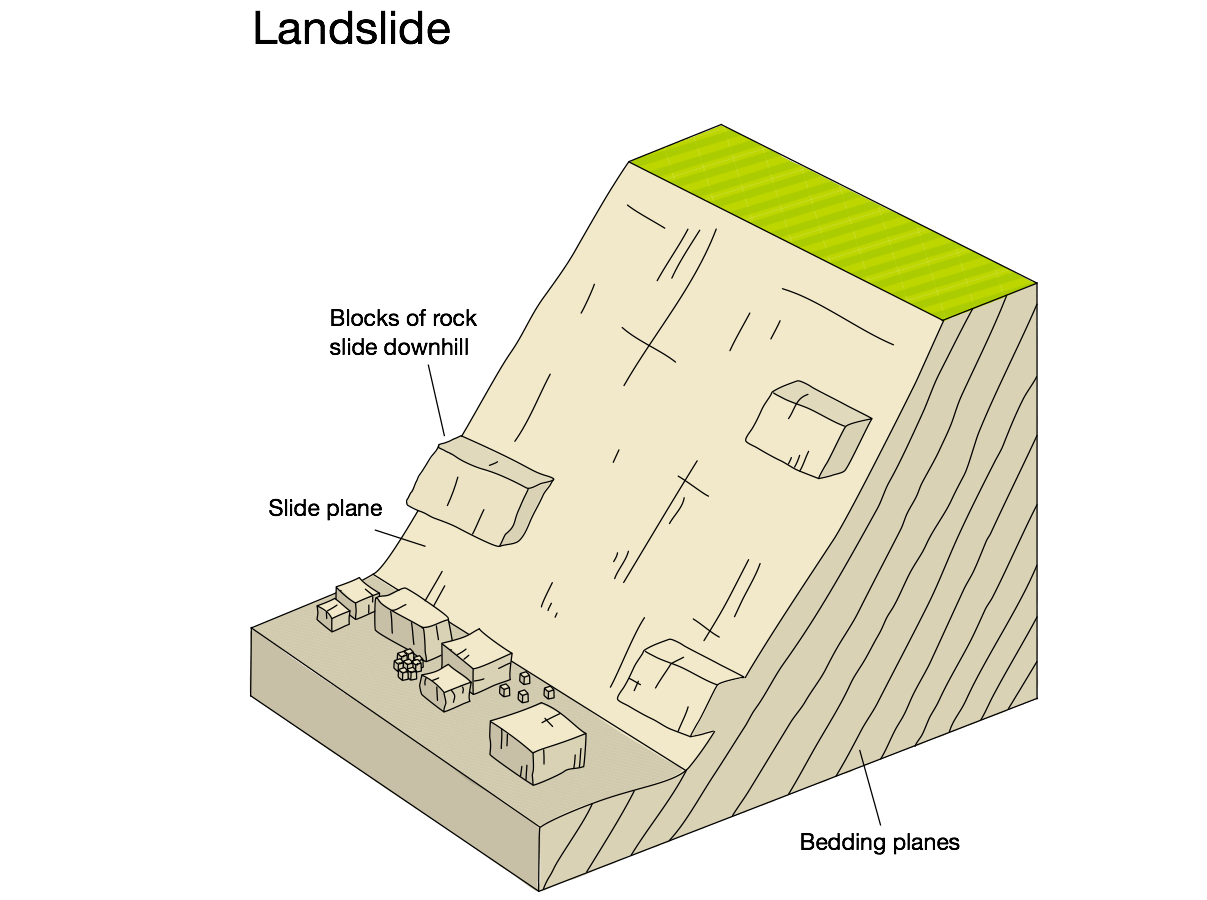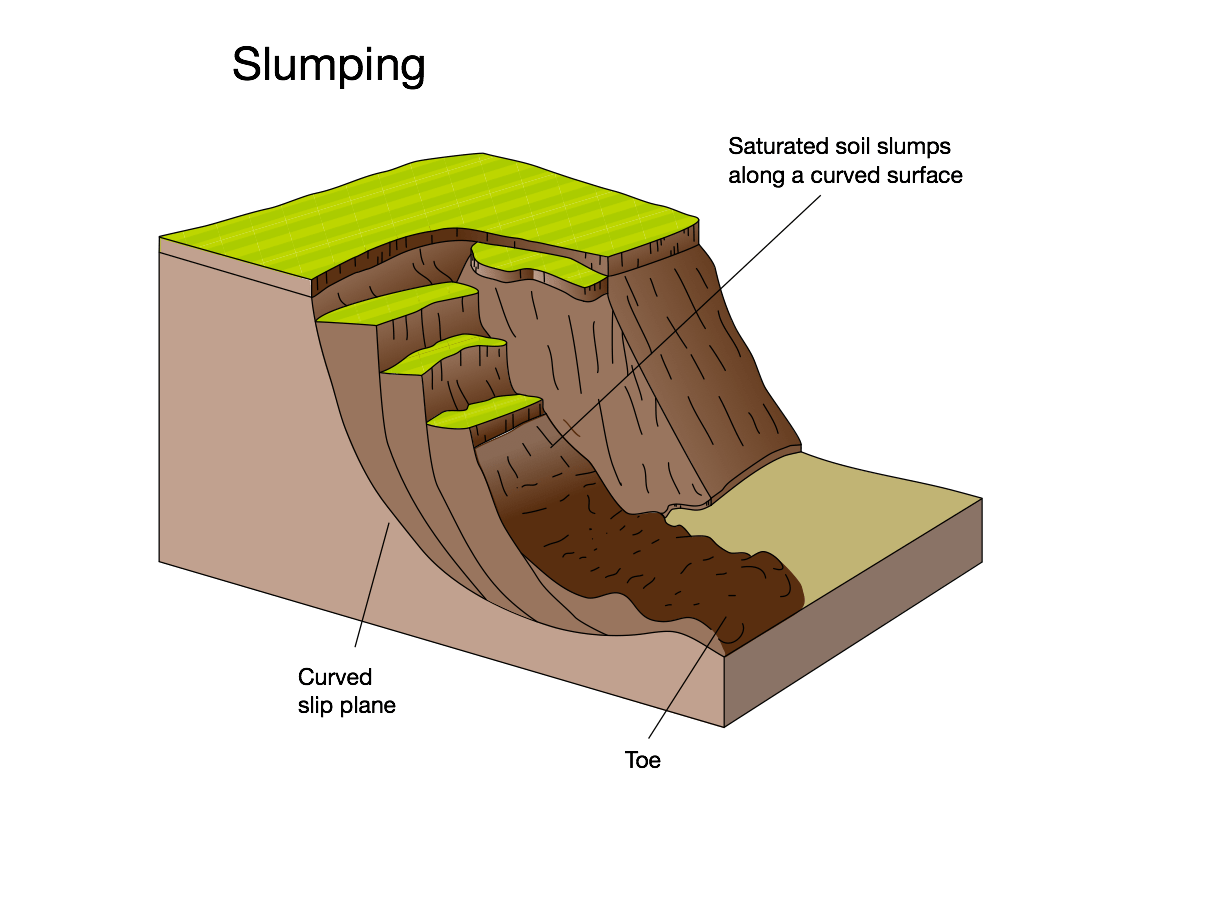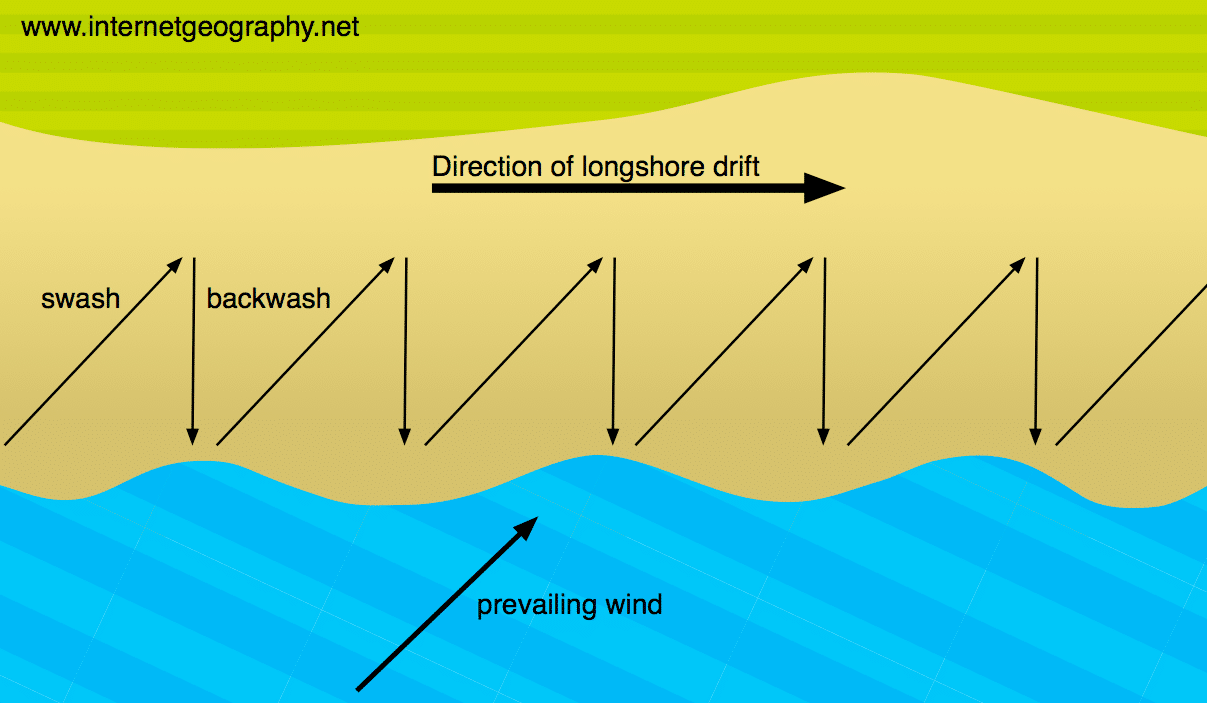Geomorphical processes
1/26
Earn XP
Description and Tags
Name | Mastery | Learn | Test | Matching | Spaced |
|---|
No study sessions yet.
27 Terms
Geomorphic processes
mass movement
weathering
erosion
transport
deposition
How are coasts effected?
coasts are effected by two types of processes, marine which are caused by the sea, (erosion, transport, deposition) and sub-areal which aren’t caused directly by the sea (weathering, mass movement, run off)
Erosion
Abrasion
Attrition
Solution
Hydronic action
Wave quarrying
Abrasion
the process where sediment is moved along the shoreline , causing it to be worn down over time . The stones rubbing against things acts like sandpaper , wearing down materials over time.
attrition
Attrition refers to the process of erosion caused by the grinding and wearing away of rock, sediment, or other materials by friction and collision. In coastal areas, attrition is caused by the movement of sediment, such as sand and pebbles, being transported by waves and currents.
Solution
Solution - this is when sea water dissolves certain types of rocks. In the UK, chalk and limestone cliffs are prone to this type of erosion.
hydronic action
Hydraulic action - this is the sheer power of the waves as they smash against the cliff. Air becomes trapped in the cracks in the rock and causes the rock to break apart. Abrasion - this is when pebbles grind along a rock platform, much like sandpaper. Over time the rock becomes smooth.
wave quarrying
When high energy, tall waves hit the cliff face they have the power to enlarge joints and remove large chunks of rock in one go through vibration. This occurs due to the intense force of the waves.
Weathering
Mechanical
Biological
Chemical
Mechanical weathering
Freeze- thaw
Pressure release
freeze thaw
In places where temperatures fluctuate a love and below freezing, freeze thaw is common, especially with a readily supply of water. Water enters cracks in rock faces as temperatures are below 0 degrees celsius. The water expands by almost 10% meaning the ice occupies more space and so it exerts pressure on the rock. The crack widens, rock breaks off.
Pressure release
Processes of erosion, weathering and mass movement remove overlying material. The rock beneath releases pressure. Overlying mass is unloaded. mechanisms within the rock cause it to develop weakness or cracks.
Biological weathering
Processes that lead to the breakdown of rocks by the action of vegetation and coastal organisms.
Some marine organisms, such as shellfish, have specially adapted shells that enable them to drill into solid rock. They are particularly active in areas with chalk geology where they can produce pitted holes
Seaweed attaches itself to rocks and the action can be enough to cause swaying seaweed to prise away loose rocks from the sea floor
some organisms can secrete chemicals capable of promoting solution
Animals can weaken cliffs as they burrow or dig into them
Chemical weathering
This occurs where rocks are exposed to air and moisture so chemical process can break down the rocks
Solution
Oxidation
Hydration
Hydrolysis
Acid rain
Solution
Where the sea dissolves certain types of rocks
Oxidation
Causes rocks to disintegrate when the oxygen dissolves in water it reacts with some rock minerals, forming oxidises and hydroxides. It especially affects ferrous, iron-rich rocks, and is evidently found by a brown/yellow staining oof rock surface.
Hydration
Makes rocks more susceptible to further chemical weathering as it involves the physical addition of water to minerals in the rocks. This causes the rock to expand, creating stress, which itself cause the rock to disintegrate. The process weakened the rock and can create cracks, joints allowing for further chemical weathering
Hydrolysis
Mildly acid water reacts or combines with minerals in the rock to create clays and dissolvable slats, this itself degrades the rock, but both are likely to be weaker than the peasant rock. Thefore making it more susceptible to further degradation.
Acid rain
Burning fossil fuels reacts with water in the atmosphere making it a mild acid. The presence of sulphur dioxide and nitric oxide makes it acidic. The mild acid reacts with rocks, weakening them or dissolving,
Mass movement
Rock fall
Land slide
Mudslide
Slumping
Rockfall
Occurs when rocks are broken down by freeze-thaw the losses material is vulnerable to the elements, if the rock is at the top of the cliff it will fall.

Landslide
A mass movement of material, they can happen suddenly or slowly. The force of gravity acting on a slope exceeds the resisting force.

Mudslide
Occurs when saturated soil and weak rock floe down a slope. Typically occur where cliffs are made of boulder clay.

Slumping
The soil/ rock debris moves downhill along a curved plane in a rotational manner. Upper part moves vertically downward, lower part move outward forming the toe.

Marine deposition
happens when sediment being carried by waves deposits its load
can occur when sediment accumulates faster than they are removed
when waves slow down after breaking
when sediment carried in the wave through the swash pauses on the land prior to backwash taking place
Aeollan deposition
Where sediment is moved and deposited due to the wind in one of two ways
Salutation - Where wind os able to lift grains of sand into the air and carry them over distances up to 30m
Surface creep - Where wind causes the sediment to roll or slide along the surface.
Longshore drift
A process of transportation that shifts eroded material along the coastline, waves approach the coast at an angle driven by the prevailing winds. Swash carries sediment up the beach at an angle, the backwash carries sediment down the beach with gravity.
